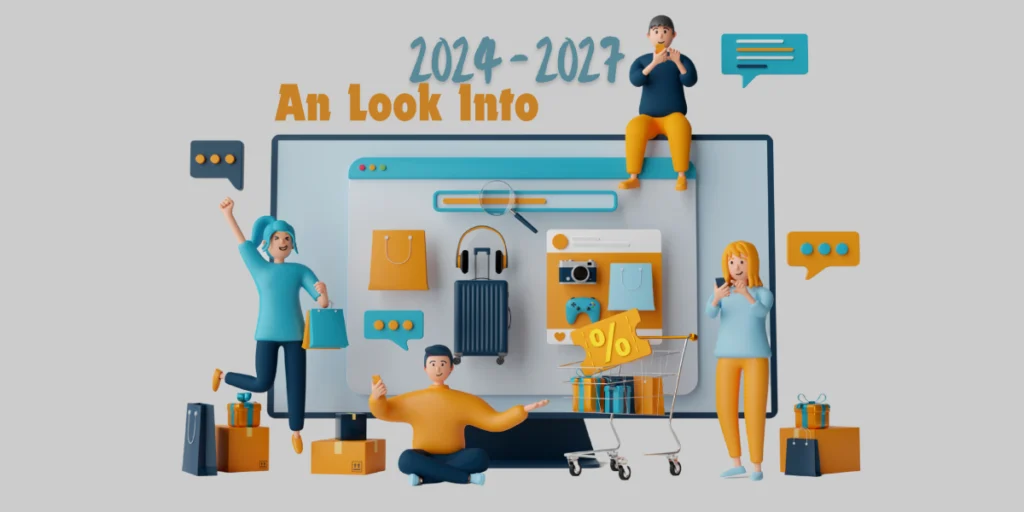
Consumer markets are undergoing massive changes driven by technological advancements, evolving consumer preferences, and global socio-economic dynamics. From the rise of artificial intelligence (AI) to the proliferation of sustainable consumption, the coming years promise a plethora of innovations and trends shaping the way we shop, interact, and live. Let us uncover the latest consumer market trends and technologies that are poised to redefine the marketplace from 2024 to 2027.
1. Rise of AI-Powered Personalization
One of the most significant trends driving consumer markets is the boom of AI-powered personalization. As AI algorithms become more sophisticated, companies can analyze vast amounts of data to tailor products, services, and marketing strategies to individual consumer preferences. By 2027, it is projected that over 85% of customer interactions will be managed without human intervention. This shift towards hyper-personalization not only enhances the consumer experience but also drives higher levels of engagement, loyalty, and ultimately, revenue.
Key Statistics:
● AI in retail has generated $8+ billion in savings by the end of 2022.
● Personalization can lead to a 10-20% increase in sales for retailers.
2. Augmented Reality (AR) Shopping Experiences
The integration of augmented reality (AR) into the consumer shopping experience is revolutionizing how customers interact with products and brands. From virtual try-on for clothing and cosmetics to AR-enabled product demonstrations, this technology bridges the gap between online and offline shopping, providing consumers with immersive and interactive experiences. By 2027, the global AR market is projected to reach $198 billion, with retail being one of the key sectors driving adoption.
Key Statistics:
● Over 120,000+ stores adopted AR technologies by the end of 2023.
● AR-driven purchases are projected to exceed $120 billion by 2025.
3. Sustainable Consumption and Ethical Branding
With increasing awareness of environmental and social issues, consumers are placing greater emphasis on sustainability and ethical practices when making purchasing decisions. From eco-friendly packaging to fair trade certifications, brands are under pressure to demonstrate their commitment to sustainability throughout the supply chain. By 2027, it is estimated that the global market for sustainable products will surpass $150 billion, driven by consumer demand for ethical alternatives.
Key Statistics:
● 73% of consumers are willing to pay more for sustainable products.
● Over 60% of consumers consider sustainability when making a purchase.
4. Contactless Payments and Digital Wallets
The COVID-19 pandemic accelerated the adoption of contactless payments and digital wallets, as consumers sought safer and more convenient ways to transact. This trend is expected to continue its upward trajectory, with mobile payments projected to surpass cash transactions by 2027. The integration of biometric authentication and blockchain technology further enhances the security and efficiency of digital payment systems, paving the way for a cashless society.
Key Statistics:
● Mobile payment transactions are expected to reach $14 trillion by 2025.
● 67% of smartphone users have made a mobile payment in the past year.
5. Subscription-Based Business Models
Subscription-based business models are gaining momentum across various industries, offering consumers convenience, flexibility, and cost savings. From streaming services to meal kits, subscriptions provide a recurring revenue stream for companies while offering customers access to curated content and personalized experiences. By 2027, the subscription e-commerce market is projected to exceed $478 billion globally, driven by the growing popularity of subscription boxes and services.
Key Statistics:
● The subscription e-commerce market grew by 100% annually from 2013 to 2018.
● Over 70% of U.S. households are subscribed to at least one streaming service.
6. Voice Commerce and Smart Assistants
The proliferation of smart speakers and virtual assistants has given rise to voice commerce, allowing consumers to make purchases and access information through voice commands. With the convenience of hands-free shopping and personalized recommendations, voice commerce is projected to reshape the way consumers interact with brands and make purchases. By 2027, it is estimated that voice commerce transactions will surpass $80 billion globally, driven by advancements in natural language processing and voice recognition technology.
Key Statistics:
Voice commerce sales reached $19 billion in the United States in 2020.
Over 70% of U.S. households owned a smart speaker by the end of 2023.
7. Influencer Marketing and Social Commerce
Influencer marketing continues to be a powerful tool for brands to engage with consumers and drive purchasing decisions. With the rise of social commerce platforms, influencers are playing an increasingly important role in driving product discovery and sales. By partnering with influencers who resonate with their target audience, brands can leverage social media channels to reach and convert customers effectively. By 2027, the global influencer marketing industry is projected to exceed $15 billion, with social commerce driving significant growth.
Key Statistics:
● 73% of marketers consider influencer marketing effective for reaching their objectives.
● Social commerce sales are expected to reach $1.2 trillion globally by 2025.
8. Hyperlocalization and On-Demand Delivery
The demand for hyperlocal services and on-demand delivery continues to rise, driven by consumers’ desire for convenience and instant gratification. From grocery delivery to ride-hailing services, companies are leveraging technology to offer personalized and efficient solutions tailored to local preferences. By 2027, the global market for hyperlocal services is projected to exceed $2 trillion, with urban areas driving significant demand.
Key Statistics:
● On-demand delivery market is expected to grow by 10% annually, reaching $335 billion by 2025.
● Over 70% of consumers expect same-day delivery for online orders.
As we look ahead to the years 2024-2027, the consumer market is characterized by unprecedented innovation and disruption driven by emerging technologies and shifting consumer behaviors. Businesses must adapt to these trends to stay competitive and meet the evolving needs of their customers.
Research References
Exploding Topics
Salsify
Products Up
Mastercard Data and Services
